CONCUSSION
BRAIN IMAGING
Our diagnostic brain imaging team is led by Anthony Silver, BCN QEEG-D with unrivalled experience in diagnostic and forensic qEEG.
The Gray Matters Baseline
Imagine a perfect recording of your child’s brain, so that if anything happens to them, you can compare their brain after injury with how it was before, and see exactly how it changed. There is no better baseline than a recording of the brain itself.
This is the technology that Gray Matters has already provided to hundreds of young athletes in schools and colleges in the region. These programs have proven invaluable, giving athletes, athletic trainers and parents the comfort and confidence of knowing that assessments, treatment and return to play decisions are based on real data.
Our children’s brains are too valuable to compromise.
The use of QEEG to assess brain injury is evidence-based and supported by decades of research and thousands of published, peer reviewed studies. QEEG is being widely adopted as the most accurate way to assess concussion and track recovery. It is increasingly used in emergency rooms, professional sports teams and the U.S. military.
Making the Invisible Injury Visible, and Measurable
QEEG Concussion Analysis
Assessing concussion severity and tracking recovery is notoriously difficult, making conventional assessment inherently subjective. QEEG resolves these issues by measuring brain activity directly, from the scalp surface. This approach is being widely adopted by both the U.S. military and professional sport.
We use a highly advanced form of qEEG, measuring brain activity from 19 scalp locations to provide unprecedented information:
1. The extent of the injury.
2. The impact of the injury on specific brain functions.
3. The tracking of recovery, so that the decisions like “return to play” are based on data, not deduction.
Conventional Concussion Assessment
INDIRECT – Relies on assessing the symptoms, or consequences of injury, rather than the injury itself.
UNRELIABLE – Subject to practice effects, patient engagement/effort.
SUBJECTIVE – Subject to clinician interpretation.
POOR-SPECIFICITY – Able to assess symptoms, not their cause.
LESS INFORMATIVE – Symptom improvement does not infer complete recovery. Return to play decisions are subjective, placing athletes at risk.
QEEG Concussion Assessment
DIRECT – Measures brain activity from 19 standard electrode sites, comparing them to an FDA registered database of normal brain activity of people of the same age, gender and handedness.
RELIABLE – Produces consistent results, time after time, regardless of effort. Practice effects not applicable.
OBJECTIVE – Empirical Measured brain function is not subject to interpretation. Highly specific – Able to see and measure the function of impacted brain areas.
HIGHLY INFORMATIVE – Know when brain function is truly healed, to prevent premature return to play decisions.
Better Assessment
Better Decisions
Better Outcomes
The use of QEEG to assess brain injury is evidence-based and supported by decades of research and thousands of published, peer reviewed studies. QEEG is being widely adopted as the most accurate way to assess concussion and track recovery. It is increasingly used in emergency rooms, professional sports teams and the U.S. military.
Anthony Silver is the founder and executive director of Gray Matters. He is a highly experienced psychotherapist, and is board certified in both neurofeedback and functional brain imaging (qEEG). He is one of around 100 clinicians in the world awarded Diplomate status by the International QEEG Certification Board.
Anthony has played a pioneering role in the integration of functional brain imaging (qEEG) in the diagnosis and treatment of mental disorders, making Gray Matters a regional center for treatment and research. Under his direction, Gray Matters has made over 10,000 brain recordings, showing the distinct functional profiles of a range of issues – including ADHD, anxiety, PTSD, and concussion – with significant implications for the way such issues can be diagnosed and treated.

